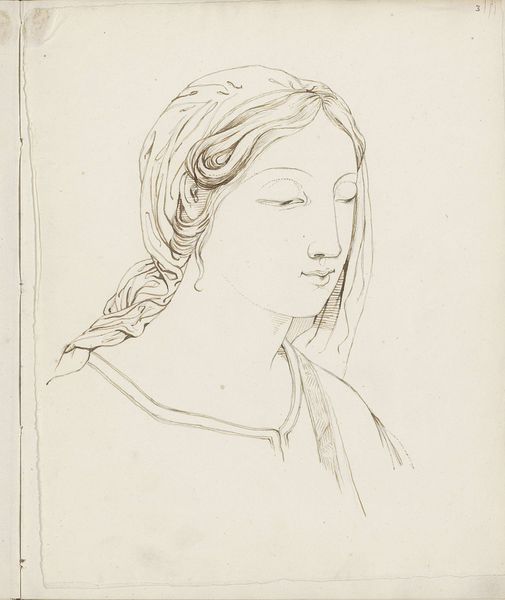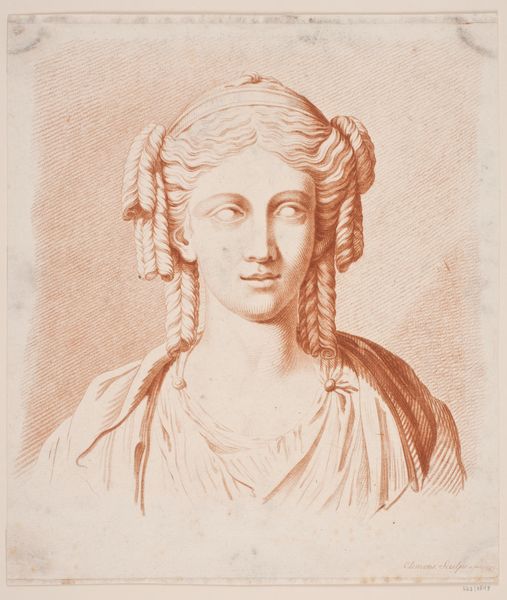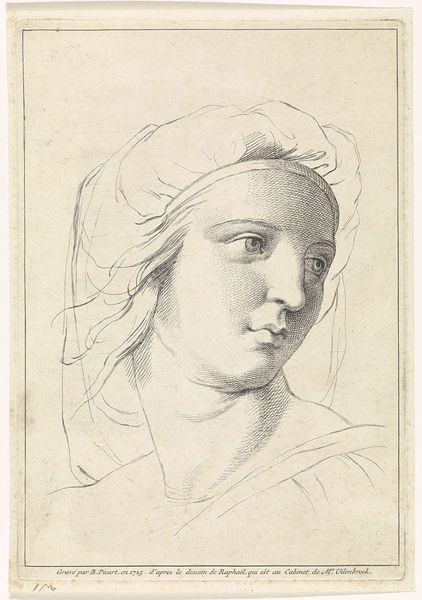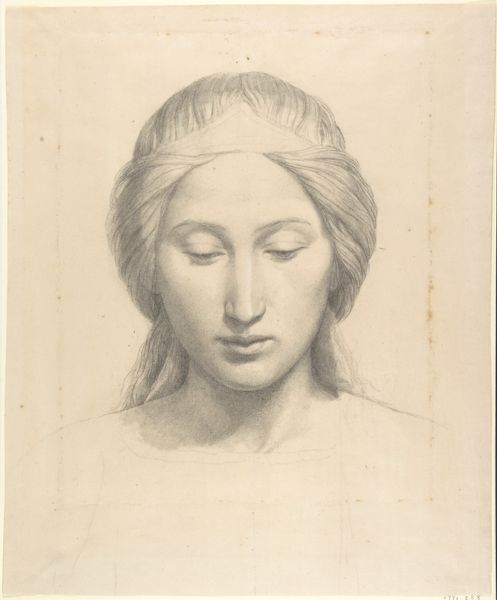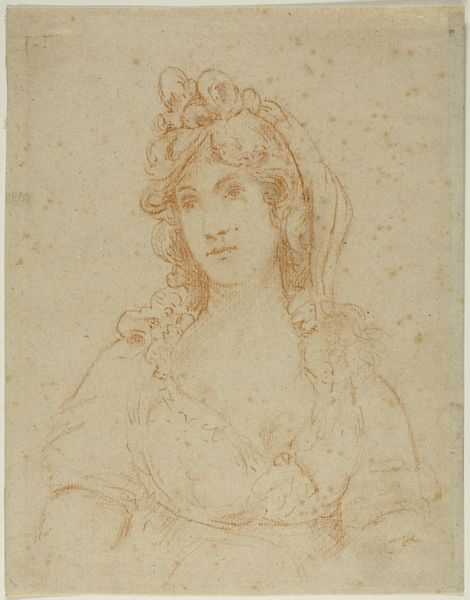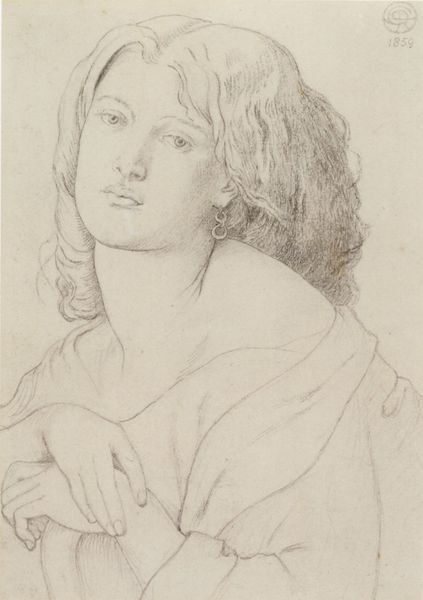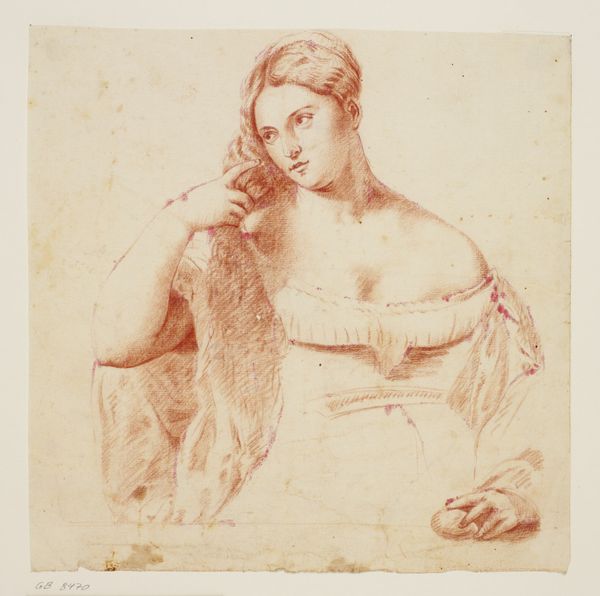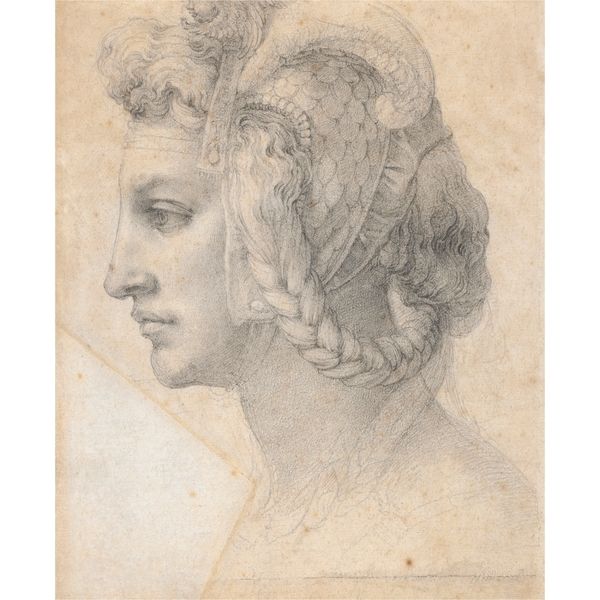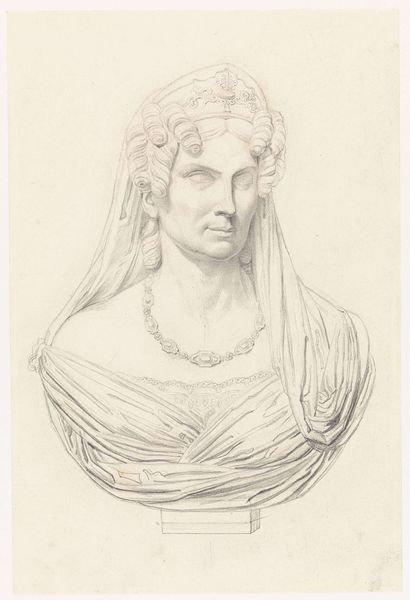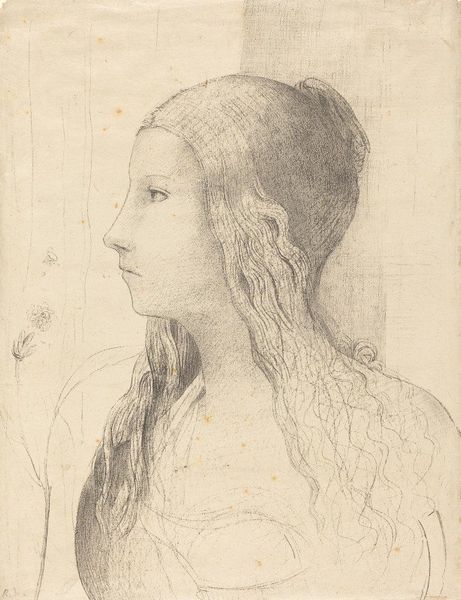
drawing, pencil
#
portrait
#
drawing
#
pencil sketch
#
figuration
#
romanticism
#
pencil
#
portrait drawing
#
academic-art
Dimensions: 255 mm (height) x 189 mm (width) (bladmaal)
Curator: This delicate pencil drawing is "Head of the Angel of Baptism, after Thorvaldsen" by Dankvart Dreyer, created in 1835. It's part of the collection here at the SMK. Editor: Immediately striking. The angel’s head is rendered with such fine lines, creating an almost ethereal lightness. The absence of eyes is rather haunting, isn't it? Curator: Indeed. Dreyer is clearly focused on form and the play of light across the sculpted planes. The composition draws the eye upwards, emphasizing the classical purity of the brow and floral crown. We see academic art merging with the aesthetic ideals of Romanticism. Editor: And one must consider that it’s “after Thorvaldsen,” suggesting a study, perhaps, of an existing sculpture. This practice of copying was crucial for artists. Were there many opportunities to see original work like this? Curator: Good point. Travel to artistic centers like Rome was becoming more accessible, but studies like these, disseminated through academies, helped codify Neoclassical ideals for a broader audience. This work circulated artistic styles through pedagogical practice, and promoted Danish national artistic pride. Editor: So it served as both artistic exercise and dissemination? Fascinating how the artist used the precision of the pencil to emulate stone, suggesting monumentality in such a simple medium. Curator: Yes, the materiality here is intriguing—a sketch aiming for the effect of sculpture. There's a certain fragility too, however. See how the subtle gradations create depth and volume. The choice to leave the eyes blank allows the viewer to project their own interpretation of purity and innocence. Editor: It's like a canvas onto which societal virtues could be imprinted. And it leads one to contemplate the artist’s process –the intent behind representing a pre-existing piece and making choices about translation from one medium to another. I find it interesting. Curator: This has certainly given us a renewed perspective. Viewing it from both a compositional and historical position enriches its visual reading so well. Editor: Absolutely, now, as we move on...
Comments
No comments
Be the first to comment and join the conversation on the ultimate creative platform.

